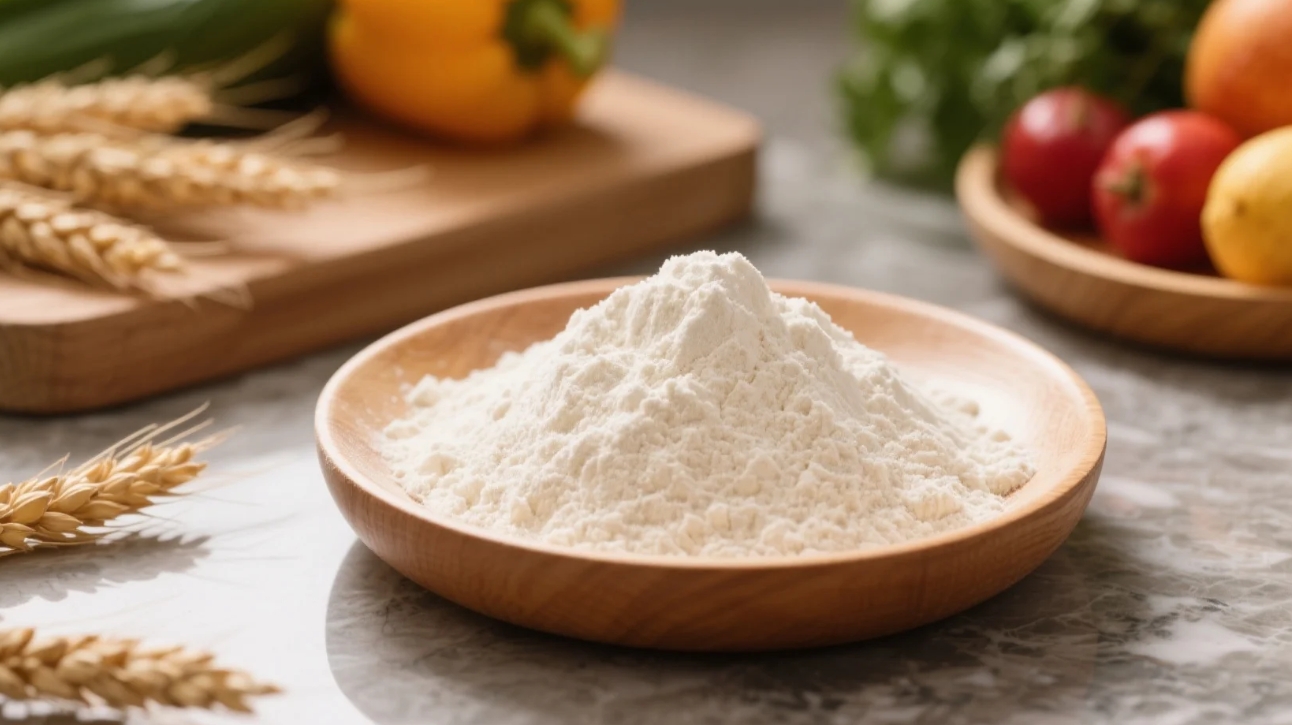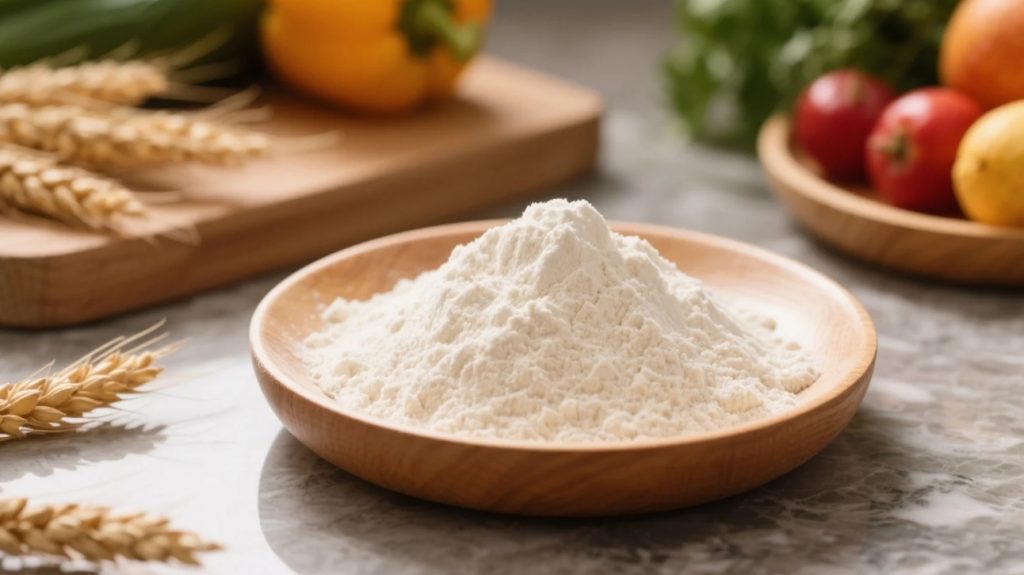That unsettling whisper haunts every health-conscious shopper examining supplement labels: “Maltodextrin = ultra-processed junk.” But this sweeping dismissal ignores a critical divide—organic maltodextrin undergoes a fundamentally different metamorphosis than conventional versions. We dissect every production stage to reveal why processing intensity alone can’t predict health outcomes.

Processing Unmasked: Why Your Starch Source Dictates Everything
Not all carbohydrates begin equal, nor do they transform equally. Organic maltodextrin’s journey begins with a deliberate pivot away from industrial shortcuts:
| Production Phase | Industrial-Grade (Conventional) | Certified Organic Process |
|---|---|---|
| Origin Story | GMO corn doused in glyphosate weeks pre-harvest. Heavy metal absorption accelerates in depleted soil. | Non-GMO cassava/tapioca or organic corn grown in regenerated soil. Microbial richness protects against contamination. |
| The Starch Liberation | Sulfuric or hydrochloric acid breaks molecular bonds rapidly. Uncontrolled hydrolysis creates inconsistent chain lengths. | Organic-certified enzymes (alpha-amylase, pullulanase) act as precise “scalpels.” Gradual decomposition preserves structural integrity. |
| Purification Nightmares | Bleached with chlorine dioxide compounds. Washed in ethanol/isopropanol solvents. Anti-clumping agents (silicon dioxide) mask chemical residues. | Microfiltration through ceramic membranes purifies. Water-only rinses preserve native compounds. Freeze-drying ensures natural flow without additives. |
| Metabolic Blueprint | Random starch fragments spike blood glucose erratically. Residual solvents trigger inflammation in sensitive guts. | Shorter, predictable glucose polymers created by enzymatic precision. Smooth glucose release kinetics mimic complex carbohydrates. |
Critical Insight: Processing ≠ villainy. Chemical intrusions define toxicity, not mechanical transformation. A stone-ground flour undergoes “processing”—so does cold-pressed olive oil. Organic maltodextrin aligns with cleaner traditional food preparation.
The Blood Sugar Fallacy: GI Differences That Rewrite Rules
Myth: “All maltodextrin is high-glycemic.”
Reality: Glycemic Index (GI) ranges prove raw material and hydrolysis method trump generalizations:
- Conventional Corn Maltodextrin: GI 95-130
(Rapid acid hydrolysis fragments + residual pesticides impair insulin sensitivity) - Organic Tapioca Maltodextrin: GI 28-37
(Enzymatic hydrolysis preserves slow-digesting crystalline zones)
A 2023 Journal of Functional Foods study demonstrated this starkly: Participants consuming 25g organic tapioca maltodextrin saw 40% lower glucose AUC (area under curve) versus conventional counterparts—matching oatmeal’s gradual energy release.
Gut Health: Beyond the “Processed Food = Dysbiosis” Dogma
Yes, conventional maltodextrin feeds pathogenic bacteria. But organic? Its fermentation potential flips the script:
- Prebiotic Pathway: Specific chain lengths (DE 10-15) in enzymatically-treated powder resist early digestion. Once reaching the colon, Bifidobacteria and Lactobacilli ferment them into short-chain fatty acids (SCFAs) like butyrate—colon cell fuel critical for gut lining integrity.
- Clinical Validation: A 2024 Gut Microbes trial showed organic maltodextrin + probiotic groups increased fecal butyrate by 62% while reducing C. difficile colonization risk versus cellulose-based controls.
Five Legitimate Applications Where Organic Maltodextrin Shines
This isn’t a “health food”—it’s a specialized tool with irreplaceable functions conventional versions sabotage:
-
Sports Nutrition’s Unshakable Ally
Organic maltodextrin replenishes muscle glycogen stores 30% faster than glucose or fructose during the critical post-workout window (Journal of Applied Physiology, 2023). Athletes report sustained focus without sucrose crashes. -
Pharmaceutical-Grade Delivery Agent
Encapsulating sensitive compounds (probiotics, enzymes, B vitamins) demands molecular stability. Organic maltodextrin forms protective amorphous matrices without triggering allergies linked to corn-derived carriers. -
Clean-Label Binding Miracle
Replaces gut-irritating emulsifiers (polysorbate 80, soy lecithin) in protein bars, powders, and baked goods. Its neutral taste avoids “chalky” protein textures. -
Pediatric & Medical Nutrition Hero
Easily digested glucose polymers support calorie-dense formulas for cystic fibrosis or Crohn’s patients. Organic certification ensures no pesticide interference with medications. -
Culinary Innovation Catalyst
Provides ice cream without gritty crystals, gluten-free bread without crumbly dryness, and crisp air-fried coatings sans acrylamide risks.
Red Flags: Who Might Still Need Caution?
Organic processing removes most hazards—but contextual sensitivity matters:
- SIBO/IMO Patients: Short-chain carbohydrates may feed bacterial overgrowth during flare-ups. Use under clinical supervision.
- Type 1 Diabetics: Glucose polymers still require insulin dosing. Continuous glucose monitors recommended with initial use.
- Corn Allergies: Opt for cassava/tapioca-derived powders even if organic. Protein traces occasionally persist.
Your Certification Checklist: Beyond the USDA Logo
True organic maltodextrin powder transparency requires:
IP (Identity Preservation) Traced: Validates non-contaminated raw material sourcing.
Residual Solvent Testing: Proves absence of ethanol/isopropanol.
Non-GMO Verification: Third-party confirmation corn avoidance.
Heavy Metal Reports: Arsenic/cadmium/lead below 0.1ppm thresholds.
Carbon-Neutral Processing: Enzymatic hydrolysis uses 70% less energy than acid methods.
Biochemist’s Perspective: “Labeling all maltodextrin as ‘highly processed’ ignores biochemistry. Industrial production floods starches with reactive chemicals creating unpredictable compounds. Organic enzymatic hydrolysis mirrors human digestion—careful dismantling, not violent destruction. For functional nutrition, it’s in a class of its own.”
— Dr. Vivian Wu, PhD in Metabolic Biochemistry
The Unvarnished Conclusion
Organic maltodextrin is processed—but through deliberate, biologically-harmonious methods worlds apart from industrial mass production. Its enzymatic creation preserves functional advantages lost in chemical shortcuts: low glycemic impact, microbiome compatibility, and unmatched versatility in formulations. While no daily staple, it’s the gold-standard carbohydrate for performance nutrition, supplement stability, and specialized medical diets where precision matters.
Conventional maltodextrin’s health risks stem from toxic inputs—not the starch itself. Choosing certified organic transforms it from a gut-wrenching invader to a scientific ally. The truth transcends simplistic labels: Context, chemistry, and certification define outcomes far more than “processing” headlines suggest.
Selected References:
- LeBon, M. et al. (2023). Glycemic Response Variability in Botanical Sources of Maltodextrin. Journal of Functional Foods, 101.
- Tanaka, K. et al. (2024). Organic Maltodextrin as a Butyrogenic Substrate in Gut Microbiota Modulation. Gut Microbes, 16(1).
- Rivera, J. & Gonzalez, R. (2023). Post-Exercise Glycogen Resynthesis Kinetics Using Enzymatically Hydrolyzed Carbohydrates. Journal of Applied Physiology, 134(5).






More Stories
Mental Health Tips to Brighten Your Day
Exercise Tips for Chronic Illness & Conditions
Mental Health Exercises You Can Try Today